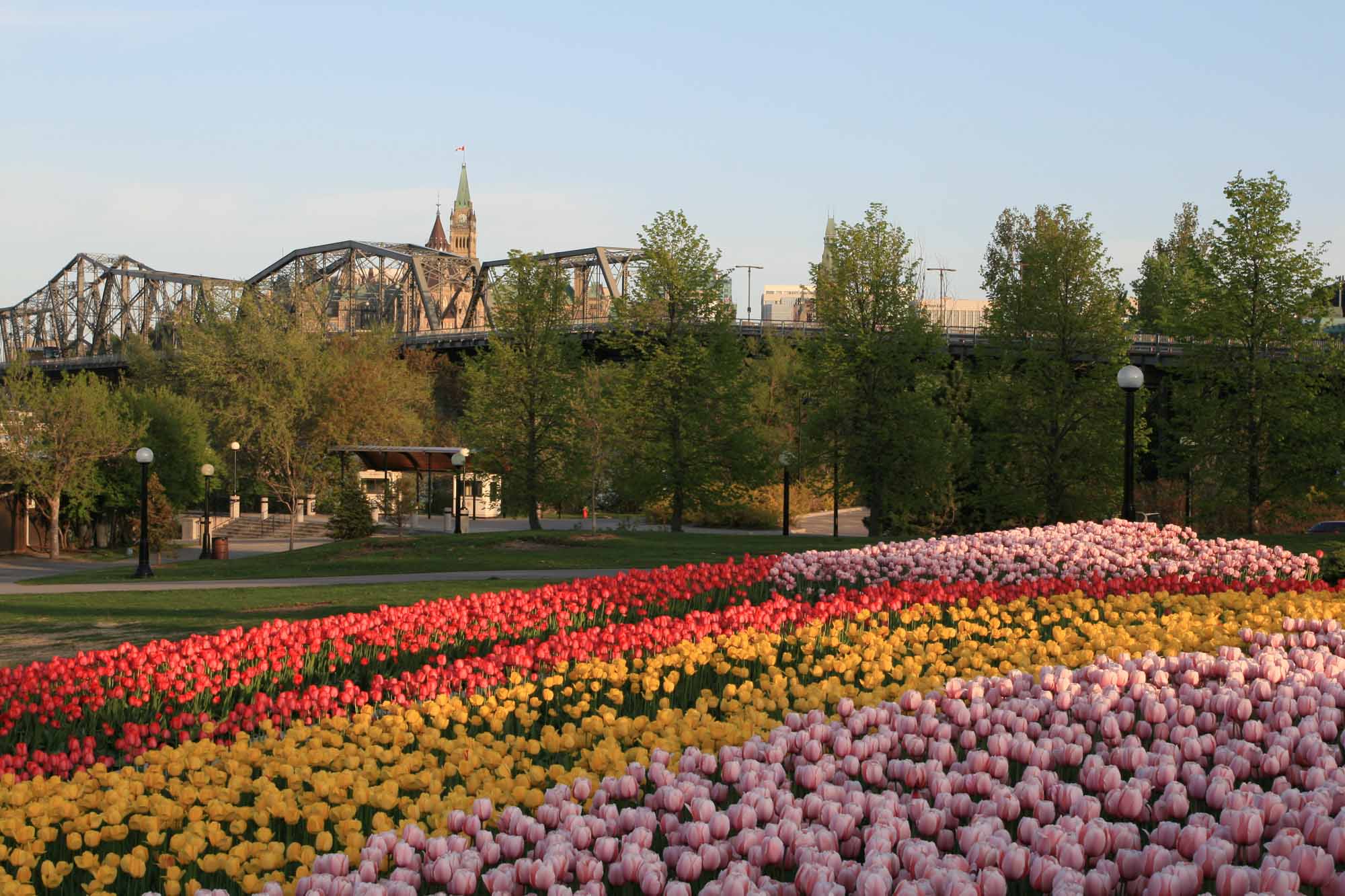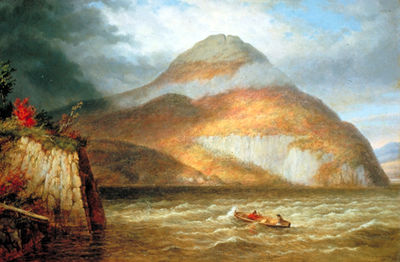Juliana Louise Emma Marie Wilhelmina, Queen of the Netherlands from 1948 to 1980 (born 30 April 1909 in The Hague, the Netherlands; died 20 March 2004 in Baarn, the Netherlands). As Crown Princess, Juliana lived in Canada from 1940 to 1945 with her daughters Princess Beatrix, Princess Irene and Princess Margriet, who was born at the Ottawa Civic Hospital in 1943. Following their return to the Netherlands, Juliana and the Dutch government gave 100,000 tulip bulbs to Canada to thank Canadians for the liberation of the Netherlands and for providing a refuge to the Dutch royal family during the Second World War. (See Canadian Tulip Festival.)
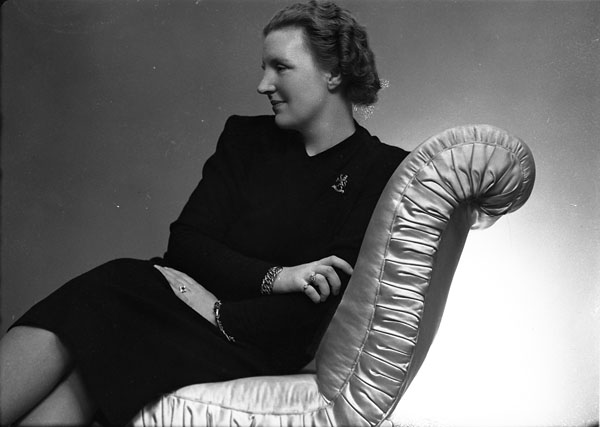
Early Life and Education
Princess Juliana was born at Noordeinde Palace and was the only child of Queen Wilhelmina of the Netherlands (1880–1962) and Duke Henry of Mecklenburg-Schwerin (1876–1934). Juliana received her primary and secondary education at home and then attended Leiden University, earning a bachelor’s degree in international law in 1930.
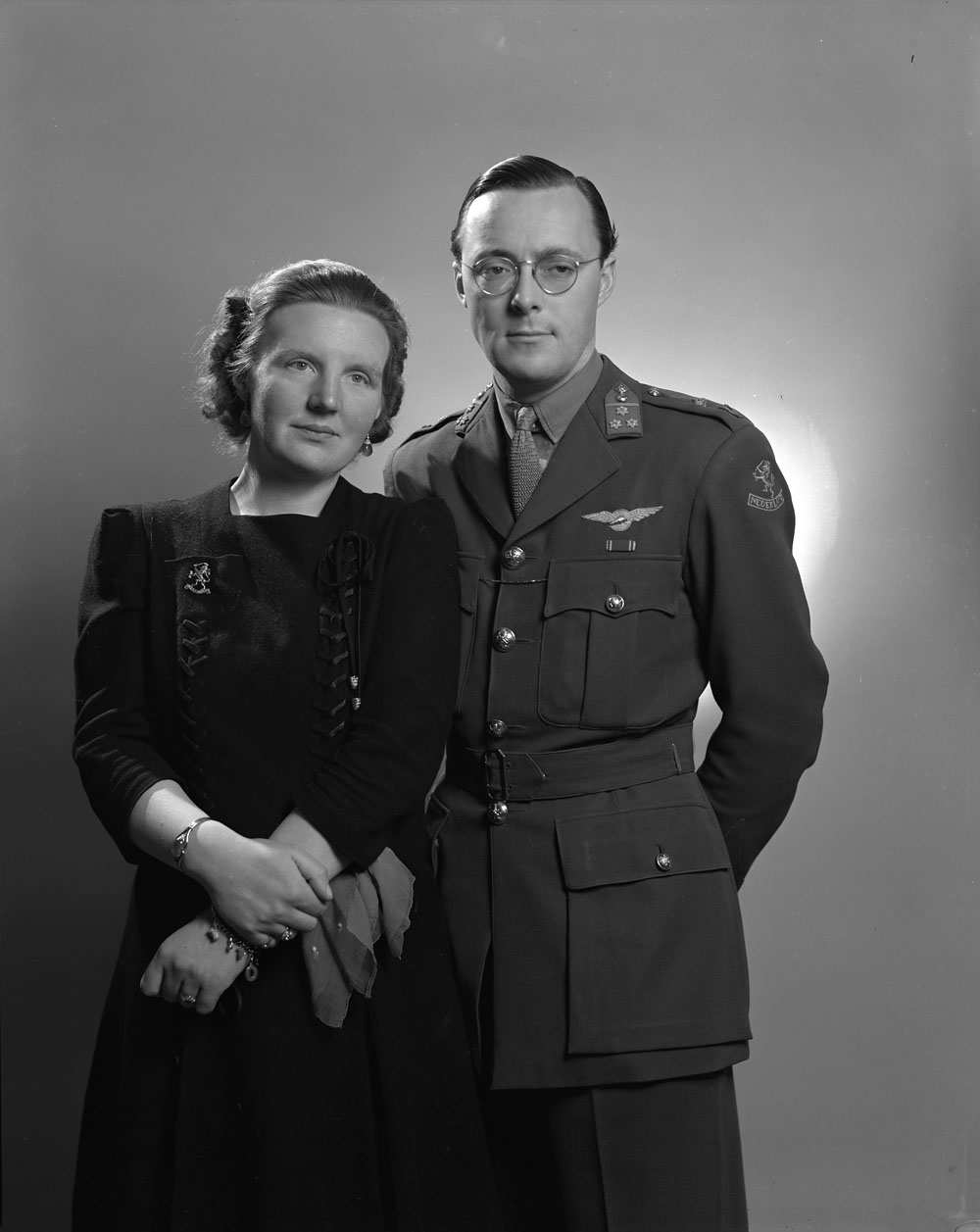
Marriage and Children
On 7 January 1937, Juliana married Prince Bernhard of Lippe-Biesterfeld (1911–2004) at St. Jacobskerk in The Hague. Juliana and Bernhard had met at the Winter Olympics in Germany the previous year. They had four daughters: Beatrix (born 1938), Queen of the Netherlands from 1980 to 2013; Irene (born 1939); Margriet (born 1943); and Christina (1947–2019), who studied music in Montreal in the late 1960s.
Canada
The Dutch royal family fled to the United Kingdom following the Nazi invasion of the Netherlands on 10 May 1940. While Queen Wilhelmina and her son-in-law Bernhard remained with the Dutch government in exile in London, Juliana and her daughters Beatrix and Irene travelled to Canada aboard the Dutch naval cruiser Sumatra to escape the Blitz. They arrived in Halifax on 11 June 1940 and initially stayed with the governor general and viceregal consort, the Earl and Countess of Athlone (a cousin of Queen Wilhelmina), at Rideau Hall in Ottawa. Juliana, Beatrix and Irene moved to 120 Lansdowne Road and then Stornoway in 1941. Queen Wilhelmina and Prince Bernhard visited them there. On 19 January 1943, Juliana gave birth to her third daughter, Princess Margriet, at the Ottawa Civic Hospital. The maternity ward where Margriet was born was declared temporarily extraterritorial so that the royal baby would have Dutch citizenship alone. Juliana and her daughters spent their summers on Bigwin Island in Muskoka, where the “Juliana” cottages were preserved after the closing of the Bigwin Inn in the 1960s.
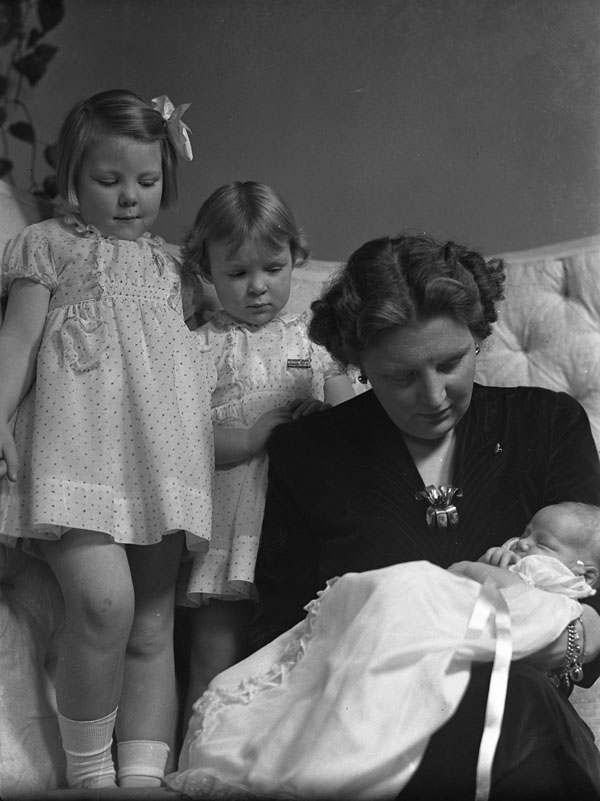
The Dutch Resistance
In her memoir, Lonely But Not Alone, Queen Wilhelmina discussed Juliana’s extensive wartime activities, writing, “Some readers may think that Juliana devoted the years of her exile almost exclusively to her children. This idea is the more understandable as little news from faraway Canada ever reached the occupied fatherland, but it’s decidedly incorrect. Of course, she gave much attention to her children, but at the same time she devoted much of her time and energy to the ‘good cause.’” Juliana directed the Netherlands Red Cross abroad, worked in a consignment store in Ottawa to raise money for the war effort and met with members of the Dutch resistance and sailors from the Dutch navy. She travelled in Canada, including to the Canadian National Exhibition in Toronto, and the United States, advocating for the Netherlands with Prime Minister William Lyon Mackenzie King and President Franklin Roosevelt and meeting with members of the Dutch diaspora in North America. Juliana also made wartime visits to Suriname and the Dutch Antilles in the Caribbean.
Return to the Netherlands
Following the Canadian liberation of the Netherlands, Juliana and her daughters were reunited with Bernhard on Dutch soil at Teuge Airport on 2 August 1945. Juliana, Bernhard and their daughters settled at Soestdijk Palace in Baarn, where Juliana worked with war refugees. When she left Canada, Juliana told Canadian journalists, “Five years is a long time, and one becomes attached. We have so many friends. We shall leave such happy memories.” In gratitude for the liberation of the Netherlands and the refuge provided for the Dutch royal family, Juliana and the Dutch government gave thousands of tulip bulbs to Canada, a tradition that continues to the present day. The annual Canadian Tulip Festival has been celebrated in Ottawa since 1953.
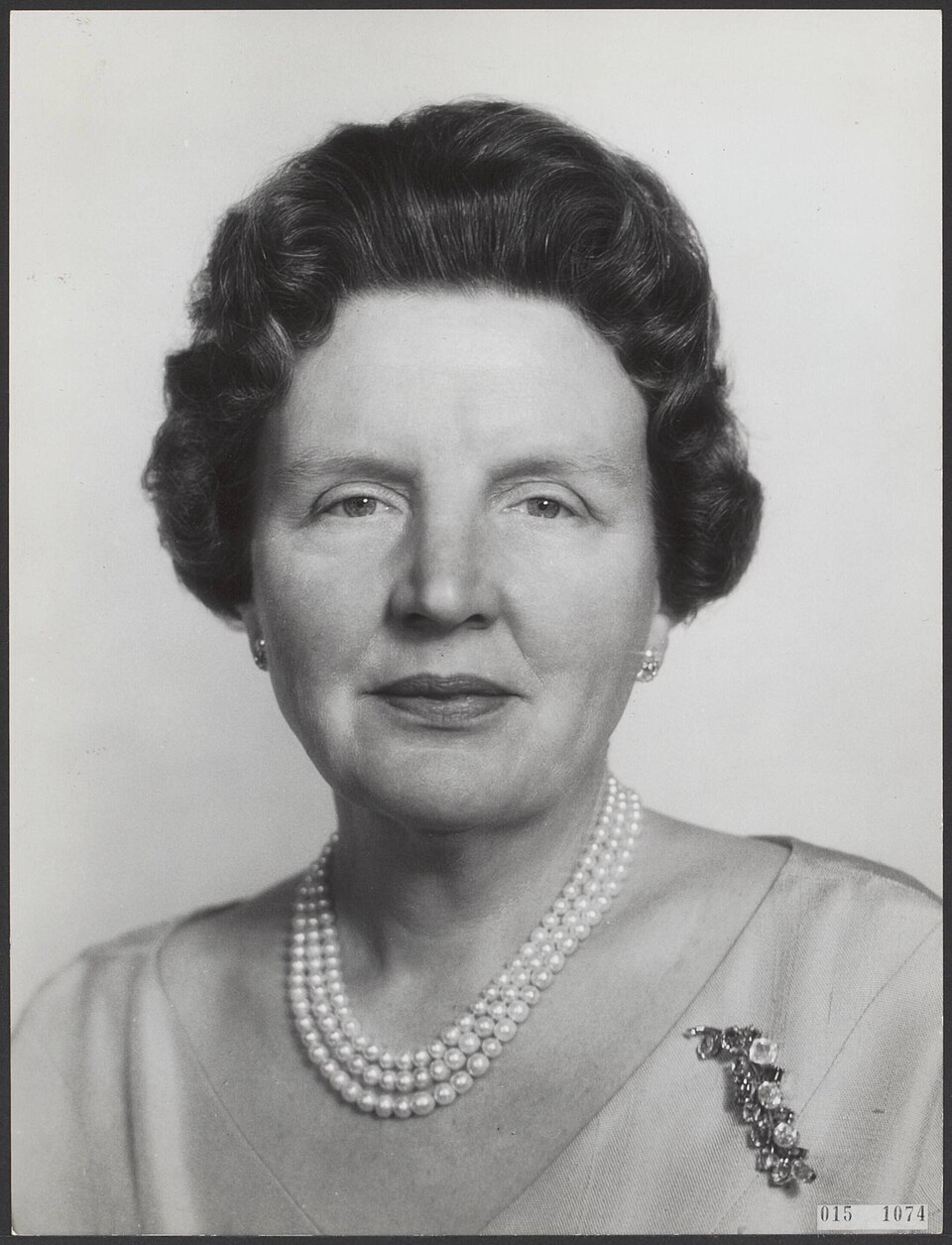
Reign
Juliana became Queen of the Netherlands in 1948, following the abdication of Queen Wilhelmina. Although Juliana remained personally popular with the Dutch people because of her informal, friendly manner and strong interest in social welfare, she experienced a series of crises over the course of her reign. Juliana reigned over a period of decolonization, formally recognizing Indonesia’s sovereignty in 1949 following a four-year war of independence. In 1953, some 400,000 acres of the Netherlands flooded when a storm surge overwhelmed the dikes and 1,800 lives were lost. Juliana visited all the affected communities.
Juliana’s marriage was strained during her reign by Bernhard’s infidelities and her reliance on the faith healer Greet Hofmans, “the Dutch Rasputin,” who was forced out of the royal household at Bernhard’s insistence in 1956. In the mid-1970s, Bernhard was officially censured by a Dutch commission of inquiry for accepting bribes from the Lockheed Martin Corporation.
Queen Juliana and Prince Bernhard toured Canada and the United States in 1952. In May 1967, the royal couple spent two weeks in Canada, privately visiting Montreal before making an official visit to Ottawa to unveil a memorial commemorating the Dutch royal family’s time in Canada during the Second World War.
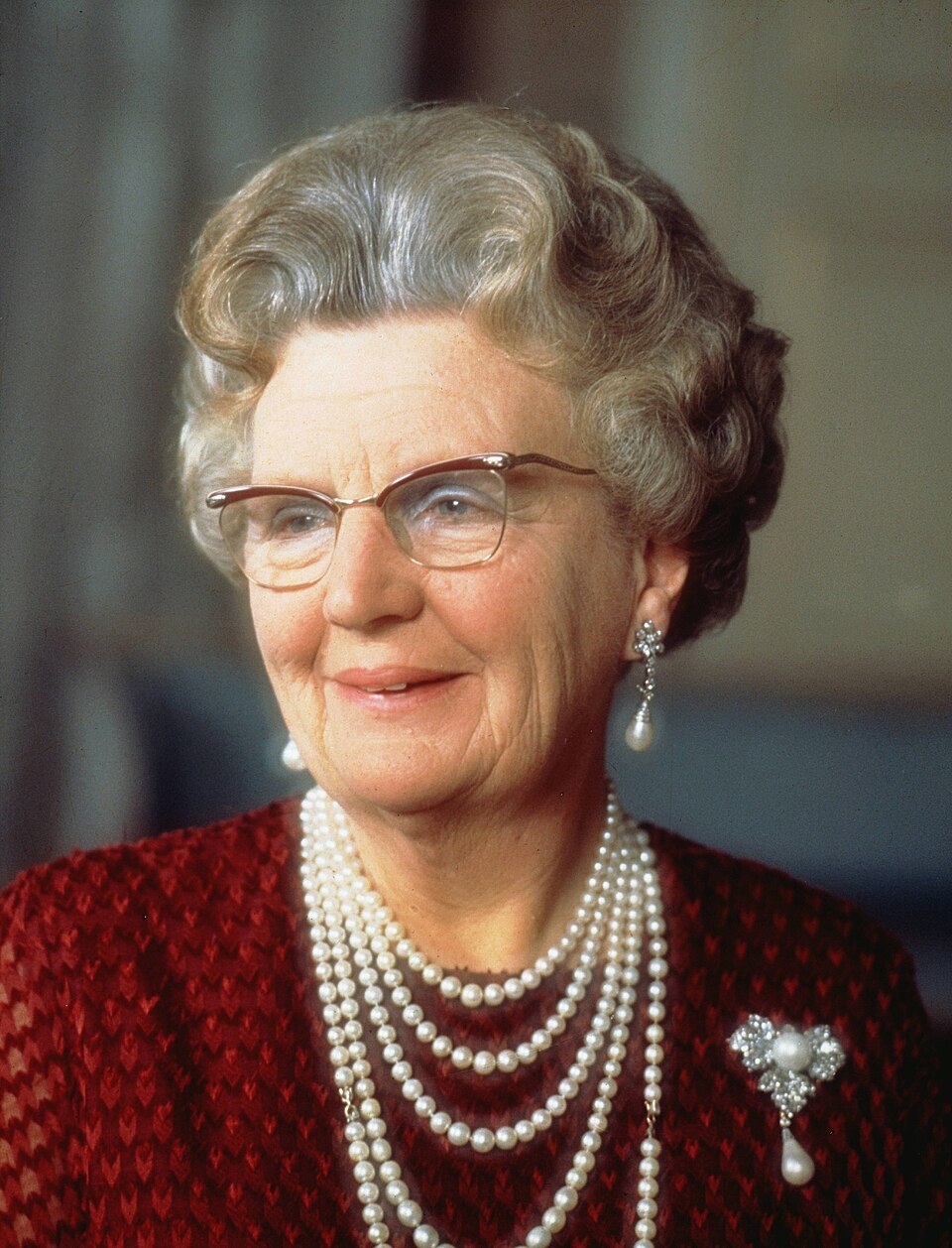
Abdication
On 30 April 1980, Juliana abdicated on her 71st birthday. She was succeeded by her eldest daughter, who became Queen Beatrix. Her health declined in the 1990s as she experienced the progressive onset of dementia and Alzheimer’s disease. Juliana died of a lung infection at Soestdijk Palace in 2004.

 Share on Facebook
Share on Facebook Share on X
Share on X Share by Email
Share by Email Share on Google Classroom
Share on Google Classroom


